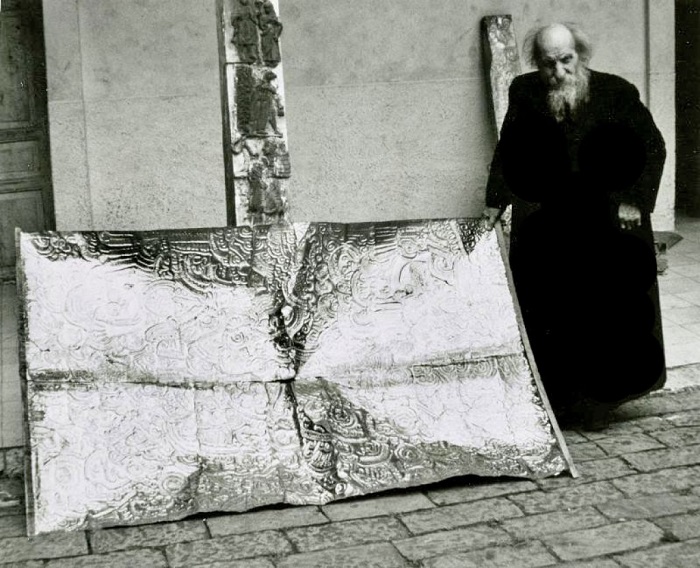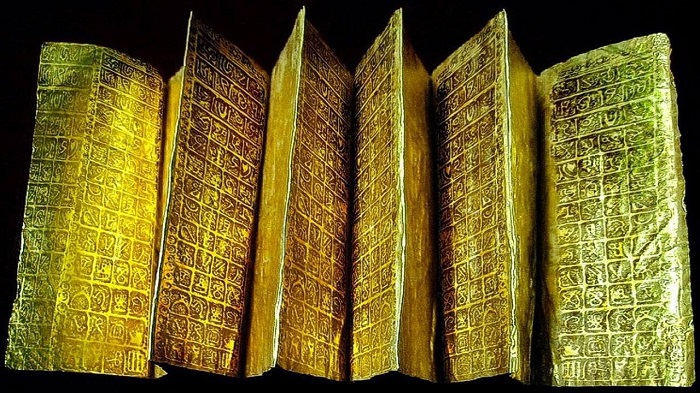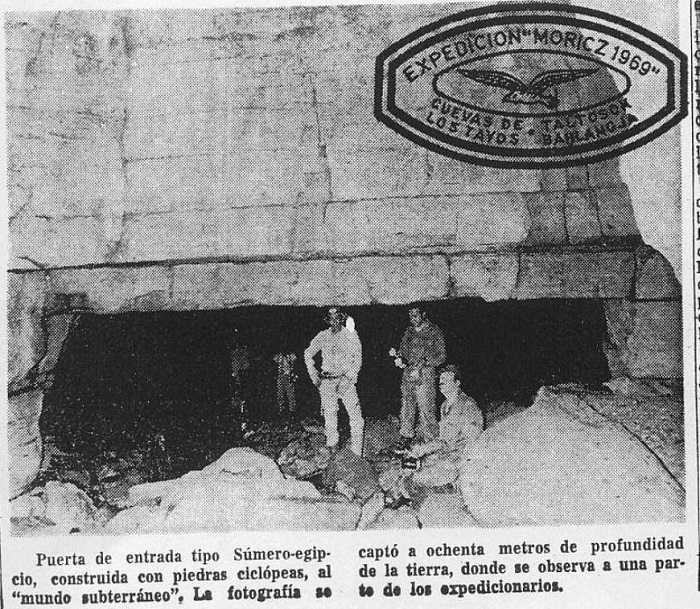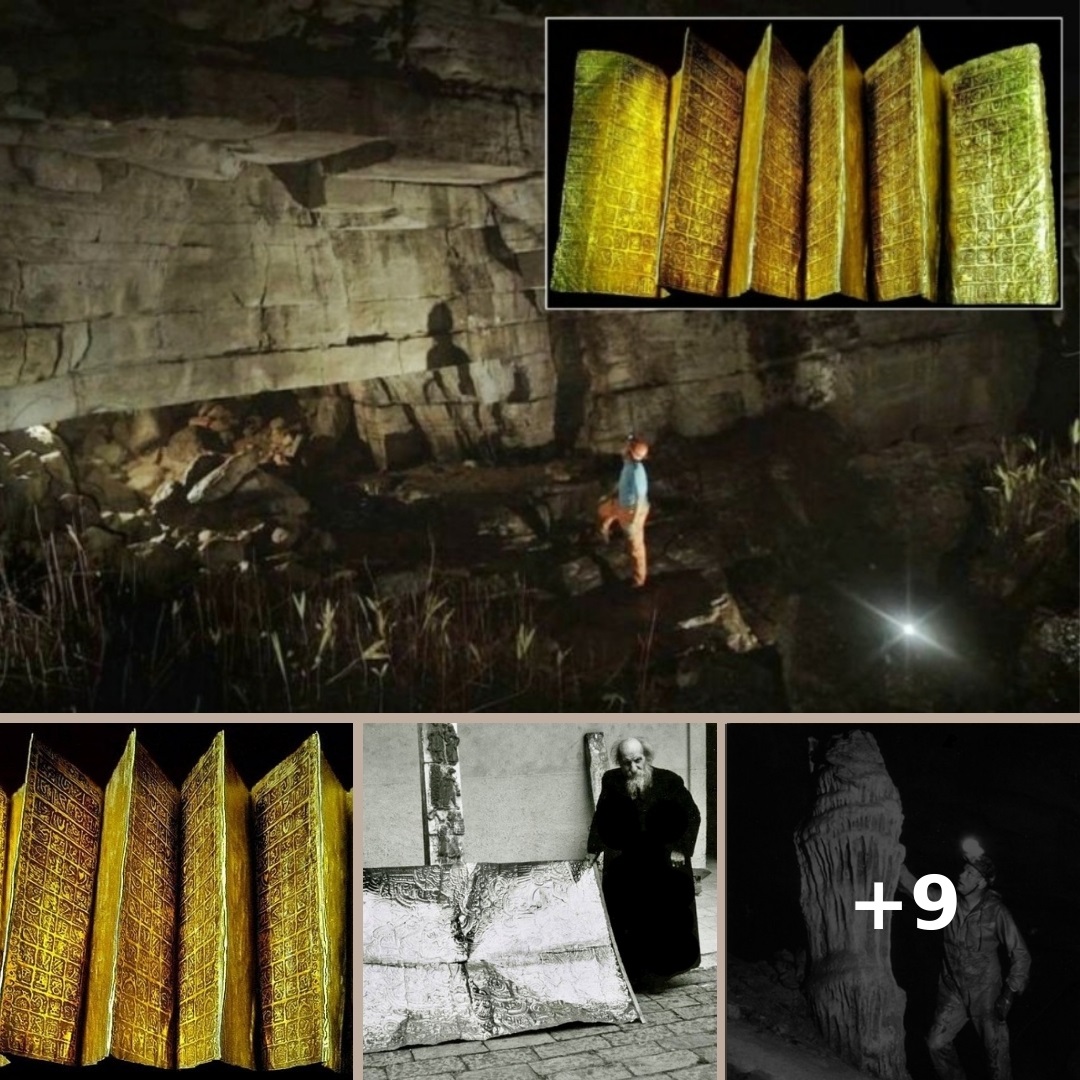The objects consist especially of precious metal sheets that probably contain the summary of the history of an extinguished civilization, of which we don’t have the least indication to date
In the early 20th century, a priest named Carlo Crespi Croci made a strange discovery in the jungle of Ecuador, which was later carefully examined and published in various research works.

Crespi worked as a priest for most of his life and despite the fact that he’d never been all that much of a believer in the extraterrestrial factor he couldn’t help but think about it as he saw the discovery with his own two eyes.
What exactly did Father Carlo Crespi witness?
Father Crespi stumbled across a massive metallic alien library which was packed full of sheets of gold, platinum, and other such precious metals.

Cueva de Los Tayos is the name of the cave where all of these artifacts and antiques were discovered. The Ecuadorian authorities challenged the discovery, but the reality is that both the Ecuadorian and British governments funded a thorough research of these caves, which drew the attention of numerous independent researchers.
Neil Armstrong, the first man to walk on the Moon, was one of those men participating in the research of the vast cave tunnels that were most likely built by humans. If this is proved to be accurate, it will expose all of the inconsistencies and errors in our history and origins.
However, the cave has not been thoroughly probed and investigated because these tunnels are massive and appear to continue on forever, but what we have seen thus far is spectacular.
Expeditions to the Cueva de Los Tayos

In 1976, a major expedition group (The 1976 BCRA Expedition) entered the Cueva de Los Tayos in search of artificial tunnels, lost gold, strange sculptures, and an ancient “metallic library,” supposedly left by a lost civilization aided by extraterrestrials. Among the group was the former American astronaut Neil Armstrong, we have already said.
For as long as anyone can remember, the indigenous Shuar people of Ecuador have been entering a vast cave system on the jungle-covered eastern foothills of the Andes. They descend, using ladders made of vines, through one of three vertiginous entrances, the largest of which is a 213-foot-deep (65-meter) shaft that leads into a network of tunnels and chambers stretching, as far as we know, for at least 2.85 miles. The largest chamber measures 295 feet by 787 feet.
For the Shuar, these caves have long been a centre for spiritual and ceremonial practices, home to powerful spirits as well as tarantulas, scorpions, spiders, and rainbow boas. They are also home to nocturnal oilbirds, known locally as tayos, hence the name of the cave. The tayos are a favoured food of the Shuar, another reason why they brave the depths of the cave system.
In their role as guardians of the cave system, the Shuar had been left in relative peace over the last century or two, apart from an occasional gold prospector snooping around in the 1950s and ‘60s. Until that was, a certain Erich von Däniken decided to get involved.

The Swiss author captured the global imagination in 1968 with the publication of his book Chariots of the Gods? which was in large part responsible for the current emergence of ancient astronaut theories. Then, three years later, he published The Gold of the Gods, unleashing a little-known theory about the Cueva de Los Tayos upon his eager readership.
In The Gold of the Gods, von Däniken recounted the claims of János Juan Móricz, an explorer who claimed to have entered the caves in 1969. Inside the cave, he asserted, he had discovered a treasure trove of gold, strange artefacts and sculptures, and a “metallic library” containing lost information preserved on metal tablets. And the caves themselves were surely artificial, he claimed, created by some advanced intelligence now lost to history.
This was red meat for von Däniken, of course, and tied in very nicely with many of his extraordinary books promoting his theories of lost civilizations and ancient astronauts.
It also inspired the first major scientific expedition to Cueva de Los Tayos. The 1976 BCRA Expedition was led by Stan Hall, a Scottish civil engineer who had read von Däniken’s work. It quickly grew to become one of the largest cave expeditions of its time, with more than 100 people involved. These included British and Ecuadorian government officials, leading scientists and speleologists, British special forces, professional cavers, and none other than astronaut Neil Armstrong, who served as the expedition’s Honorary President.

The expedition was a success, at least in its less fanciful ambitions. The extensive network of caves was mapped far more thoroughly than ever before. Zoological and botanical findings were recorded. And archaeological discoveries were made. But no gold was found, no otherworldly artefacts discovered, and there was no sign of a metallic library. The cave system, too, appeared to be the result of natural forces rather than any kind of advanced engineering.
Interest in the Cueva de Los Tayos never again reached the heights of the 1976 expedition, but numerous research expeditions have since taken place. One of the more recent expeditions was that of Josh Gates and his team for the fourth season of the television series Expedition Unknown. Gates entered the cave system with Shuar guides and Eileen Hall, the daughter of the late Stan Hall from the 1976 expedition.
Conclusion
While expeditions such as these have resulted in fascinating zoological and geological discoveries, there’s still no sign of gold, aliens, or a library. However, some of these studies have intensified the possibility that the cave tunnels were artificially created. Therefore the most inconclusive question is: Why would somebody build such a vast cave system? It appears that humans were responsible for the development of these caverns. But who and when was it tasked with designing such a complicated and sophisticated system?
Why build something so deep into the Earth if you don’t have anything to hide from? Regardless, the cave continues to spark the curiosity of a wide range of academics and researchers.

